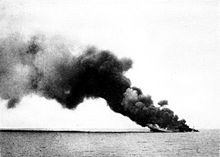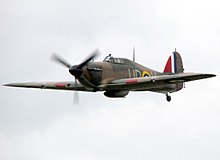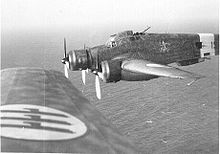A Game of Thrones: The Board Game |
 |
| Winter is Coming |
-----------------------------------------------------------------------------------------------------------------------
The Road to Cheren (2013) |
Revolution Games (II)
| The Italian conquest of Abyssinia |
"Purnels One Volume
History of WWII Excerpt from Chapter III
"Star of Africa".
Lorenzo, Duke of Aosta and defender of the East African Italian
Empire had served as a competent if uninspired Staff Officer in WWI and Spain.
He was better known as an administrator and maker of long speeches than a
fighter.
The Duke of Aosta’s, British opponent was Major-General Steve Thomas,
was a man made of a very different metal to the Italian Duke.
Major-General Thomas was by trade an Accountant, he had been a
member of the Artists' Rifles when the First World War had began. By the end of
the WWI he was Britain’s' youngest Brigadier, winner of the DSO and Bar. He had
served in Flanders, Palestine, and led "Thomas Force" in The Russian
Civil War. Major-General Thomas had prospered in civilian life between the wars, then when
a second world war broke out, Mr Thomas was recalled to the army in his former rank.
Major-General Thomas helped plan in 1940 the defeat of the Italian Army in Libya with
"Operation Compass” and he also command the British troops in the operations final stages.
Now Major-General Thomas was given his first important command, the
conquest of Italian East Africa. Major-General Thomas had five strong regular
Indian Army Divisions as well as a strong Free French Brigade. The air support was
strong, and the Royal Navy had the Italian East African Fleet blockaded for
some time.
The Italian armed forces was by contrast small, about a third of the size of the Allied forces, with only two regular battalions among them. Some of the Italian forces was made up local raised units, of doubtful loyalty to Il Duce. Many of the Colonial Brigades were under strength, and spare parts for artillery and aircraft were in short supply.
 |
| Italian ship Ramb I sinking, 1941 |
 |
| RAF Hurricane |
The Italian armed forces was by contrast small, about a third of the size of the Allied forces, with only two regular battalions among them. Some of the Italian forces was made up local raised units, of doubtful loyalty to Il Duce. Many of the Colonial Brigades were under strength, and spare parts for artillery and aircraft were in short supply.
 |
| Italian SM-79 Bombers |
Britain had agents of 101 Force already in country to stir up
trouble for the Italians among their new subjects, But the Italian position was
very strong, if undermanned, with rocky mountainous terrain, and unless the
British could over whelm their adversaries by early June then rain would turn
the roads into mud and every valley a river. Duke Aosta had a good staff of
veterans from both WWI and Spain and wisely relied on their judgement.
Later than he had hoped Major-General Thomas forces crossed the
Northern border on 19/1/40.There was fighting at the border town of Kassola, and
at the Casi River Bridge. The common scene of the Campaign had begun-the
Italians would hold defensive ground as long as they could, and then retreat. Time
and again British armoured thrusts would just miss the Italians. Though low on
ammunition the Italian artillery was as good as ever in support. British air
gradually came to dominate the skies, but when the Italians finally conceded
the low ground and went into the mountains, there was only so much they could
do.
By early March the British were on the road to Cheren and Asmara,
their main goals. In the mountains however the Italians reverted to old
fashioned trench warfare from prepared positions on mountain sides. The British
needed every man they had to slowly grind their way forward. A native uprising
lead by the famous South African explorer and butterfly collector Doctor
Gabriel Singer flared up at the vital Italian crossroad town of Adwigre,
cutting the Italian position in two. The uprising was ruthlessly put down by
two Colonial Brigades, and Doctor Singer was shot as a spy (he was later
awarded the George Cross, by the British Home Office).
 |
| Ethiopian fighters await the return of the Emperor |
The Free French were only days away from Cheren on the 30th of May
when the rains finally broke bringing operations to a near complete stand
still. Major-General Thomas pulled his troops back from exposed positions, still
keeping up a strong presence in the mountains, at the same time the general
recognised that he would have to wait for months to finish off the Italians.
Fighting began again in October, this time a mostly Free French
Corps backed by New Zealanders and lead by General Le Clerc was leading the attack.
The Italians low on ammunition and their position hopeless the
Duke of Aosta capitulated on Armistice Day 1940.
General Le Clerc refused to accept the side-arms of "An Honourable
foe who has struggled against an impossibility." Not to be out done, the
New Zealand General Freyburg asked for the honour of shaking the hand of a man
who had done his duty and more. This coming from a Victoria Cross winner, helped
soothe the sadness of defeat Duke of Aosta
recorded in his Memoirs ‘For The
Greatness of Italy’.
From the end of 1941 to September 1943, c. 7,000 men
in scattered Italian units fought a guerrilla war from the deserts of Eritrea
and Somalia to the forests and mountains of Ethiopia.
 |
| Italian Armoured Car under repair near Cheren |
 |
| South African troops at Fort Hobok 1941 |
 |
| The German Motorized Company |
 |
| British artillery at Cheren |
 |
| British Wellesley Bomber on it way to bomb Cheren |














